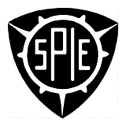OPTICAL |
 |
January 1992 Volume 31 Number 1 Page 5 |
OPTICAL |
 |
January 1992 Volume 31 Number 1 Page 5 |
With this issue we start a new year and volume of Optical Engineering. The past year has been a rewarding one for me and I'd like to take this opportunity to thank the authors, reviewers, and staff for all of the time they put into the papers to make this journal a success. We've had some interesting issues to deal with during the last year and one of them involved the use of copyrighted material in journal papers.
The concept and the laws of copyright came into being once printing became a viable technique for producing multiple copies of an original piece of writing. The copyright may be held by either the author or the publisher - today it seems most common, at least for scientific material, that the copyright is held by the publisher. That is certainly true of this journal and most other scientific and technical journals. This gives the publisher the authority to protect the interest of both the author and the publisher against unauthorized use. Copyright laws vary from country to country as do the rights under the laws, including the length of the protection. The international or universal copyright was first agreed to under the Bern Union in 1886 and has been modified many times including by the so-called Universal Copyright Convention sponsored by the United Nations in 1952. Most countries currently adhere to these copyright rules. In the United States, copyright was first protected by law in 1783 in one of the earliest laws enacted by Congress. The driving fource for this law was Noah Webster who, from self-interest, wished to protect his Americal Spelling Book.
Optical Engineering received a letter in August 1991 from Playboy Enterprises, Inc., that stated:
It has come to our attention that have used a portion of the cneterfold photograph of our November 1972 PLAYBOY PLAYMATE OF THE MONTH Lenna Sjööblom, in your July 1991 issue of Optical Engineering magazine.... Playboy Enterprises, Inc., the publisher of PLAYBOY magazine, owns the copyright in and to this photograph.They were correct. Optical Engineering has used Playboy Enteriprises copyrighted material unintentionally in serveral papers published in our special section on visual communications and image processing. The image in question is used a great deal by workers in image processing and is often referred to as the Lena image. As SPIE noted in its response to Playboy Enterprises, "The image is widely used in the worldwide optics and electronics community. It is digitized and its common use permits comparison of different image processing techniques and algorithms coming out of different research laboratories." We also pointed out that SPIE is a nonprofit scientific society and, hence, the material published by SPIE is intended for educational and research purposes.As fellow publishers, we're sure you understand the need for us to protect our proprietary rights. We assume you did not intentionally make unauthorized use of our material and we ask that you contact us for authorization before using any of our copyrighted material in the future.
We ran into a related situation with the rabbit head design (a trademark of Playboy Enterprises, Inc.) , which was used in a paper to illustrate an imaging technique. The author requested and was granted a one-time-only permission to use the design.
With regard to the "Lena" image, we reached an understanding with Playboy and appreciate their cooperation. However, because plublished to not know whether or not material is borrowed, adapted, etc., from other sources, be advised that it is each author's responsibility to make sure that materials in their articls are either free of copyright or that permission from the copyright holder has been obtained.
Brian J. Thompson
Editor